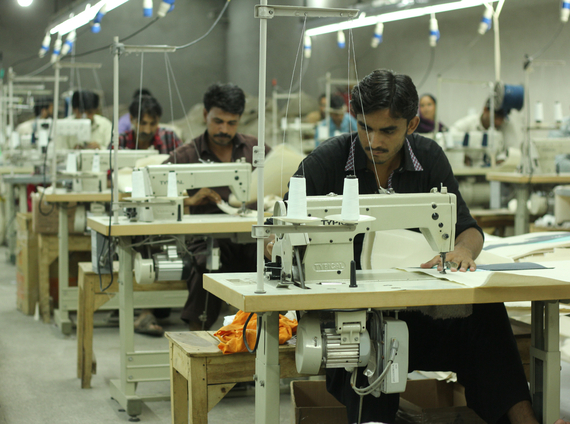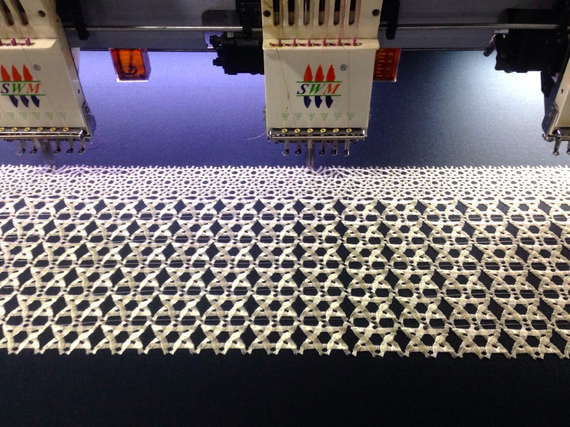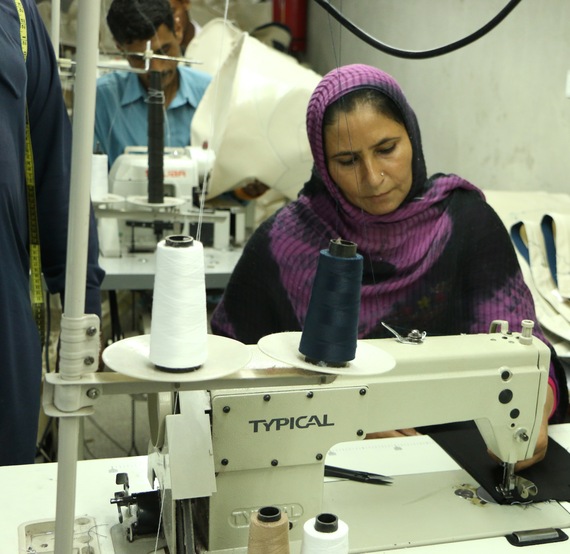A few months back, the New York Times Sunday Review published an opinion by Emily Matchar, entitled "Sorry, Etsy. That Handmade Scarf Won't Save the World." Co-owners of an ethical fashion brand, my partner and I devoured the article. To be honest, we saw where Matchar was coming from -- it's hard to think buying a scarf knit by a Brooklyn mom will address the major failures in the fashion industry to protect both its workers and the environment. We agree with Matchar that governments must continue to work together to ensure industry regulations are strong and enforced, particularly in developing countries where much of the world's apparel is made. However, Matchar also had a largely pessimistic take on the consumer-focused ethical/eco fashion movement that concerned me. Although regulations are necessary to set a baseline that companies must meet, ethical fashion's true potential can and must be unlocked by consumer habits.
According to Matchar,
While buying homemade gifts is a lovely thing to do, thinking of it as a social good is problematic. Like locavorism and 'eco-consumerism,' it's part of a troubling trend for neoliberal 'all change begins with your personal choices' ideology....[that] doesn't work, at least not very well.
This statement is in direct conflict with #FairTuesday, a global "ethical shopping initiative" launched in 2012 that takes place the day after Cyber Monday each year. The website fairtuesday.com states as the initiative's goal: "to inspire conscious consumerism and show how an everyday purchase can change lives in a whole community."
So, what exactly are the handmade/ethical/eco/slow fashion movements seeking to achieve? And is it possible? In my own eyes, the two most important beneficiaries of the ethical fashion movement are the people in the supply chain and the environment. First, "ethical" means respectful treatment and fair pay for all members of the fashion industry, from the entrepreneurial designer, to the skilled artisan, to the hardworking seamstress and mill worker. Second, "eco" means reduction or elimination of any harm to the environment caused by the industry.
How do we get there? Well, as Matchar points out, sound international and country-specific regulations are obviously needed. But these take time and political will. In addition, they need to be implemented properly to have teeth.
The global fashion industry is entirely dependent on its customers. Real change in this consumer-driven space will only come from people making personal choices.
It's all about Supply and Demand
So, let's look at the demand: what factors do consumers consider when deciding on a clothing purchase? The look? The quality? The price? Who made it? Yes, yes, yes and, generally only so long as the first three are on target, yes. At the end of the day it is the product that has to justify the purchase.
"When it comes to complex issues, 'vote with your wallet' campaigns have never been particularly effective in driving consumer change," Matchar says. And maybe it's true, if consumers are only asked to "vote" one day out of 365. Real change will only happen if the choice ceases to be one-off and becomes a daily commitment.
This is where supply and demand must intersect. It's up to the brands committed to ethical and sustainable practices to provide real, accessible, desirable alternatives, so that consumers really can "vote with their wallets." The industry is listening. New eco-juggernauts like Everlane and Zady are stepping in to fill the void, and this is a good thing. Smaller start-up brands working in specific communities in the U.S. and abroad are providing more unique and affordable options, and they are working on bringing "handmade" to scale in a way that actually can make an impact. No longer is the only alternative to sweatshop apparel something hand-knit by a woman in Brooklyn, though that's still a nice option!
The Product + The Story
Back to that demand. Assume a consumer has two choices of comparable quality, style and price (and perhaps the ethical choice is slightly more expensive). How is "who made it?" given enough weight to tip the scales each time? Here, storytelling is imperative. Ms. Matchar seemed to take a very narrow view of this:
This is what you might call 'affiliative consumerism' -- people buying stuff from people they know and find appealing. People who are like them. On the face of it, this is a good thing: Isn't that what community is about? Yet it means that money stays in a circle of like-minded individuals.
I absolutely disagree with the implication that the only story that resonates with a consumer is one told by someone just like her. I actually believe that the storytelling movement has a huge capacity to generate empathy for cultures and people we may not otherwise come into contact with. This is particularly important to brands working in less developed and dangerous markets, where most U.S. consumers will never travel.
As for creating change through the ethical fashion movement as a whole, storytelling is crucial. The more consumers feel like they can be part of a product's "story," the more attentive they may become to the stories of the people behind all products they purchase. The #FairTuesday initiative builds awareness to highlight the potential of storytelling to create change.
So, while the "buying handmade" and #FairTuesday initiatives aren't a panacea, let's not throw the baby out with the bathwater just yet. It's true, buying handmade should not be the sole alternative to buying apparel made in sweatshops. And instead of spending only one day buying fair trade gifts, consumers need to support ethical standards in all their purchases year-round for true, sustainable change to occur. Luckily, there is a growing middle ground filled by brands creating great, accessible fashion and who are committed to the most important goals of this movement: the ethical treatment of workers and the environment. Instead of poo-pooing the players, let's help change the game.



